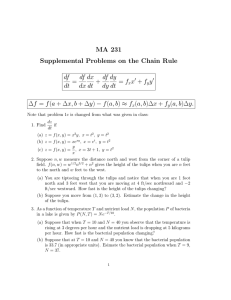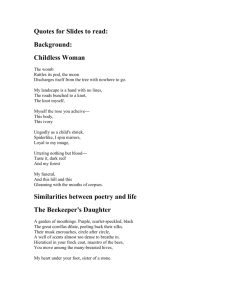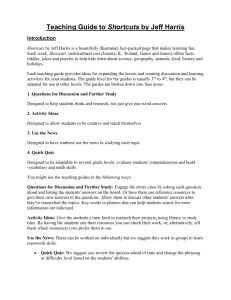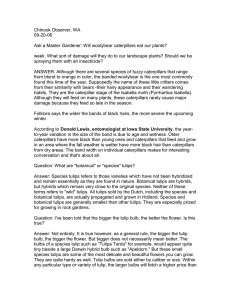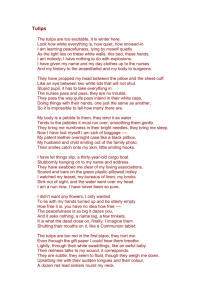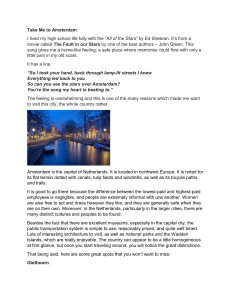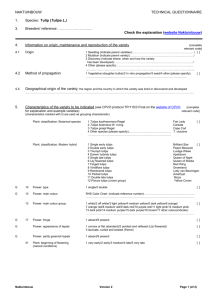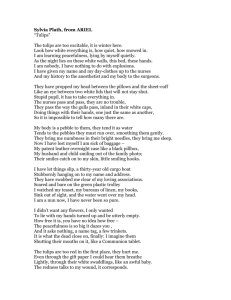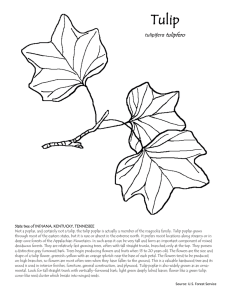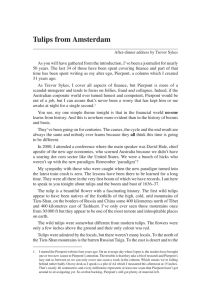Tulipa
advertisement
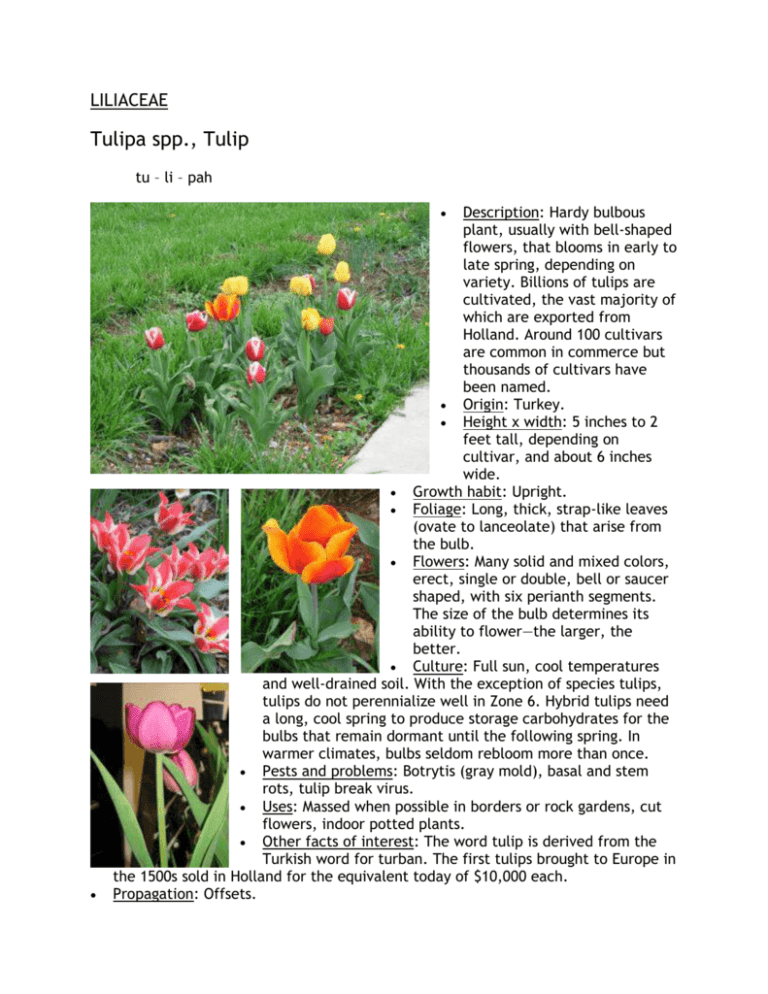
LILIACEAE Tulipa spp., Tulip tu – li – pah Description: Hardy bulbous plant, usually with bell-shaped flowers, that blooms in early to late spring, depending on variety. Billions of tulips are cultivated, the vast majority of which are exported from Holland. Around 100 cultivars are common in commerce but thousands of cultivars have been named. Origin: Turkey. Height x width: 5 inches to 2 feet tall, depending on cultivar, and about 6 inches wide. Growth habit: Upright. Foliage: Long, thick, strap-like leaves (ovate to lanceolate) that arise from the bulb. Flowers: Many solid and mixed colors, erect, single or double, bell or saucer shaped, with six perianth segments. The size of the bulb determines its ability to flower—the larger, the better. Culture: Full sun, cool temperatures and well-drained soil. With the exception of species tulips, tulips do not perennialize well in Zone 6. Hybrid tulips need a long, cool spring to produce storage carbohydrates for the bulbs that remain dormant until the following spring. In warmer climates, bulbs seldom rebloom more than once. Pests and problems: Botrytis (gray mold), basal and stem rots, tulip break virus. Uses: Massed when possible in borders or rock gardens, cut flowers, indoor potted plants. Other facts of interest: The word tulip is derived from the Turkish word for turban. The first tulips brought to Europe in the 1500s sold in Holland for the equivalent today of $10,000 each. Propagation: Offsets.
